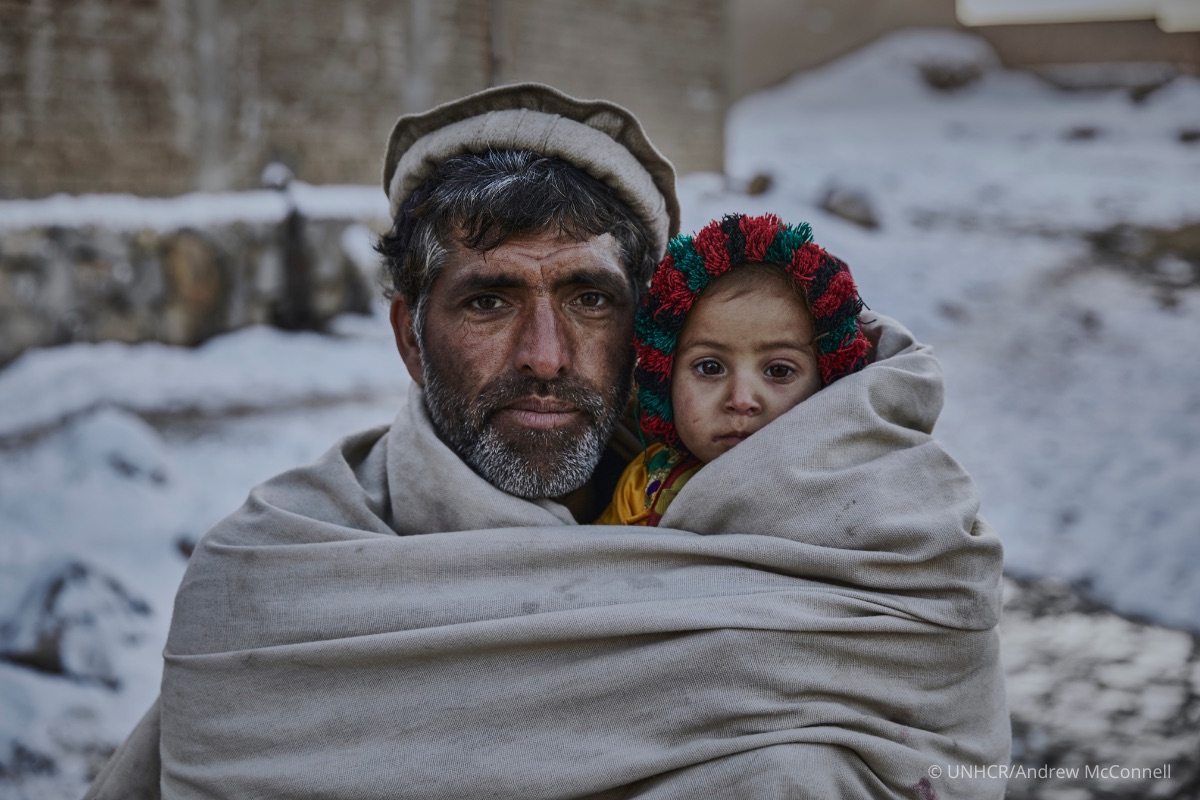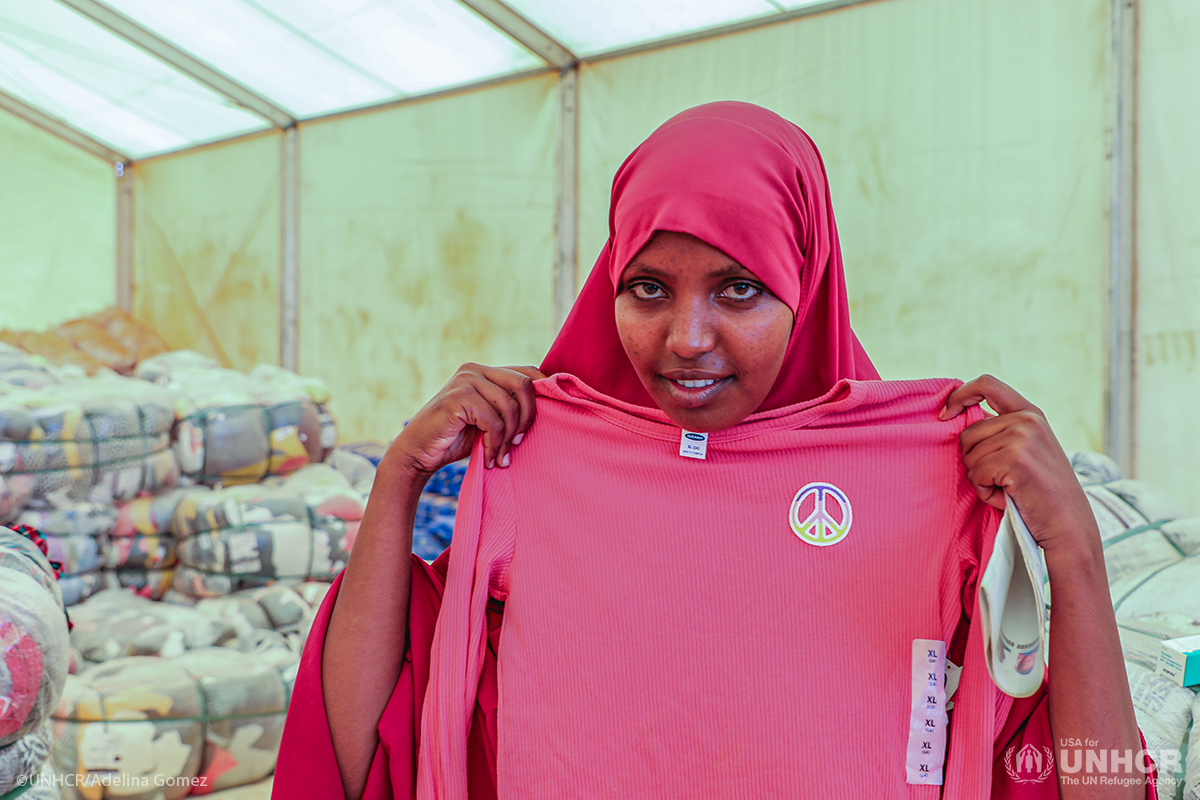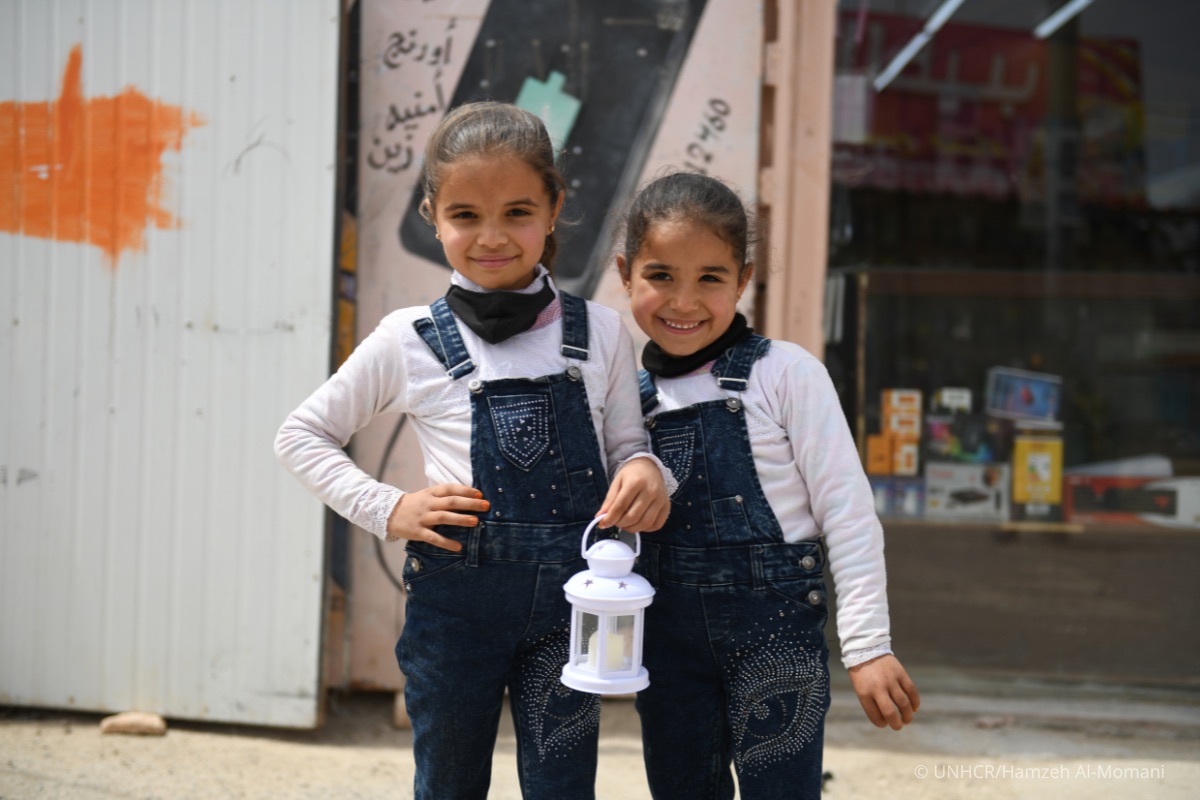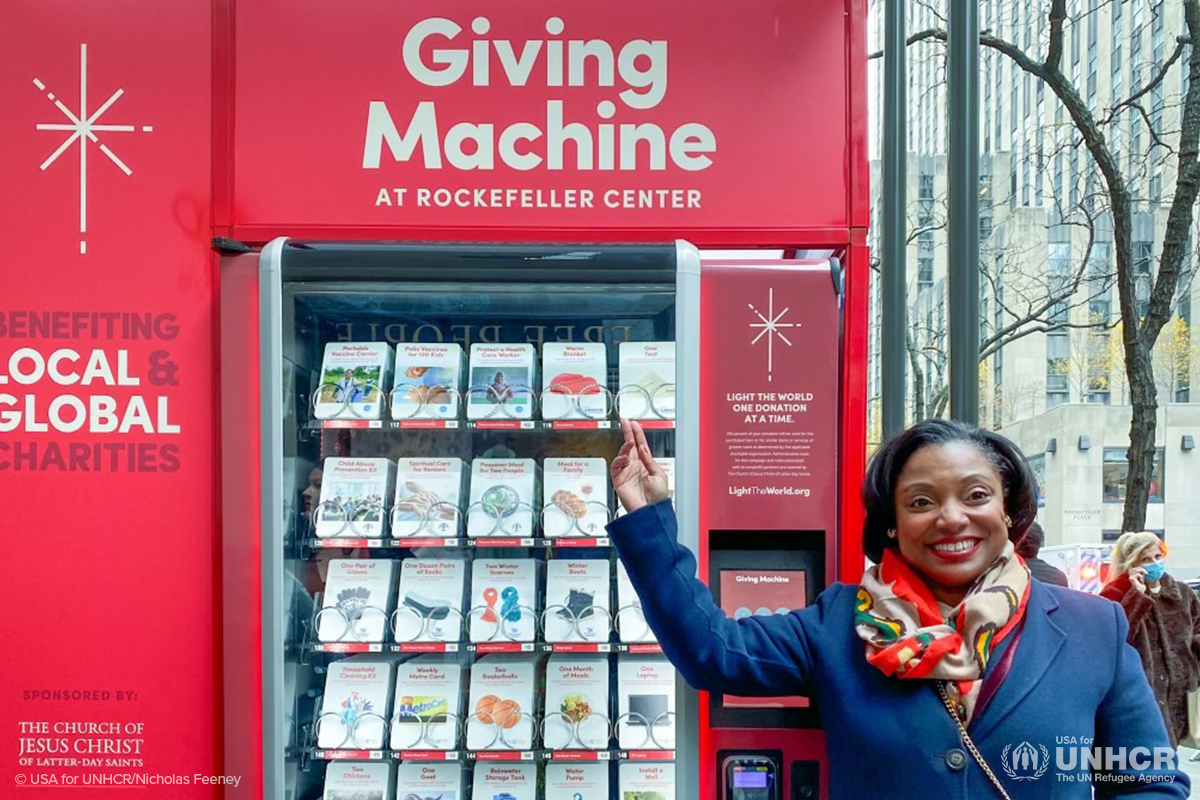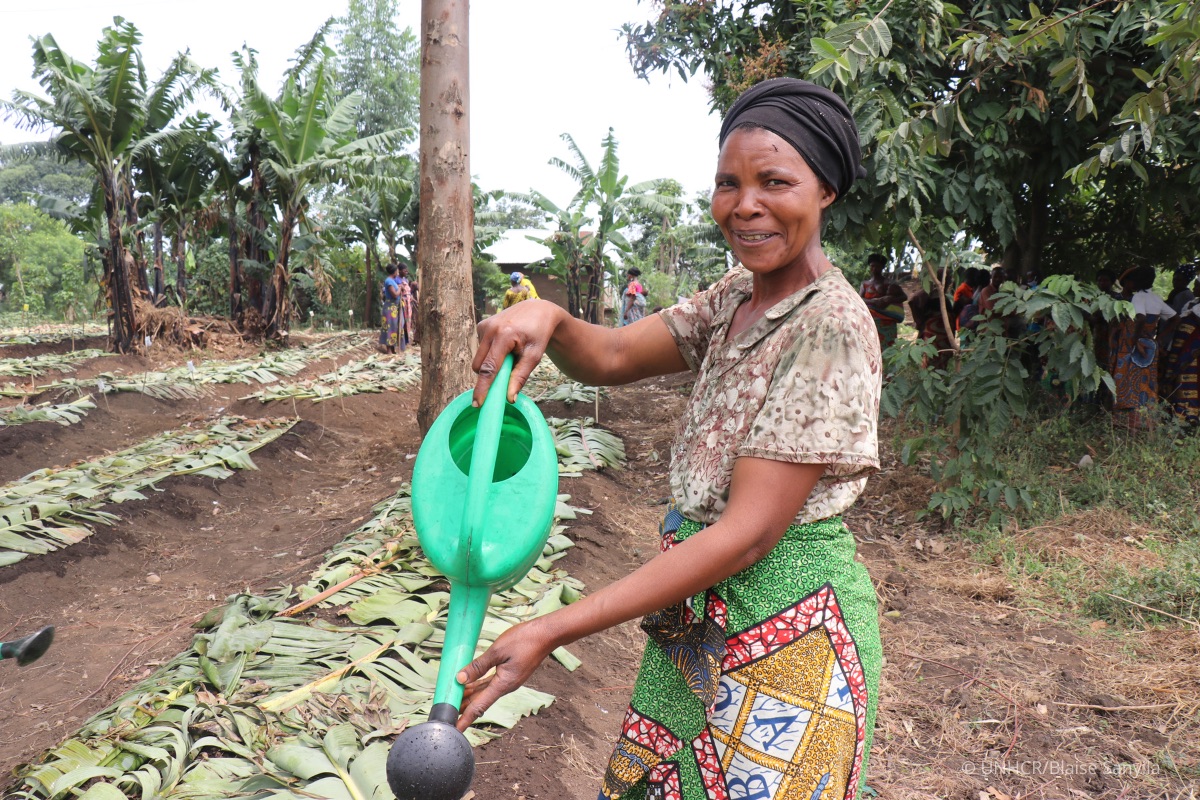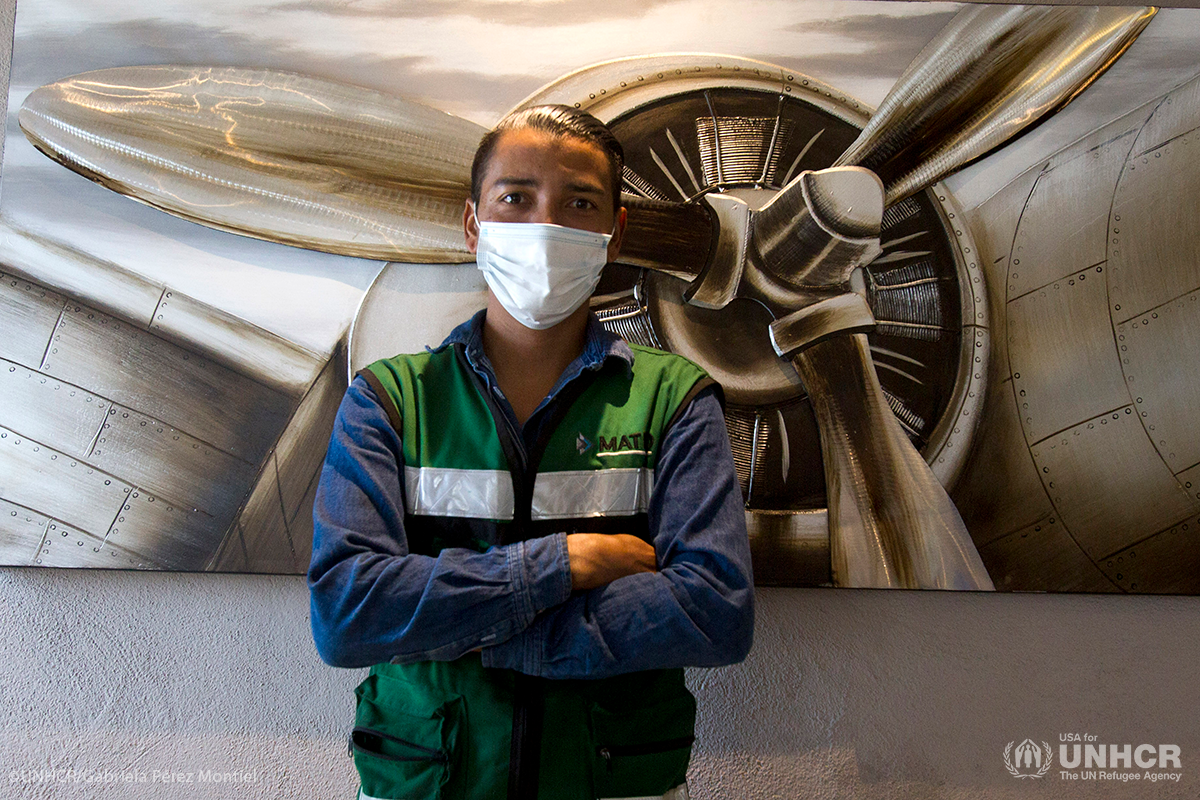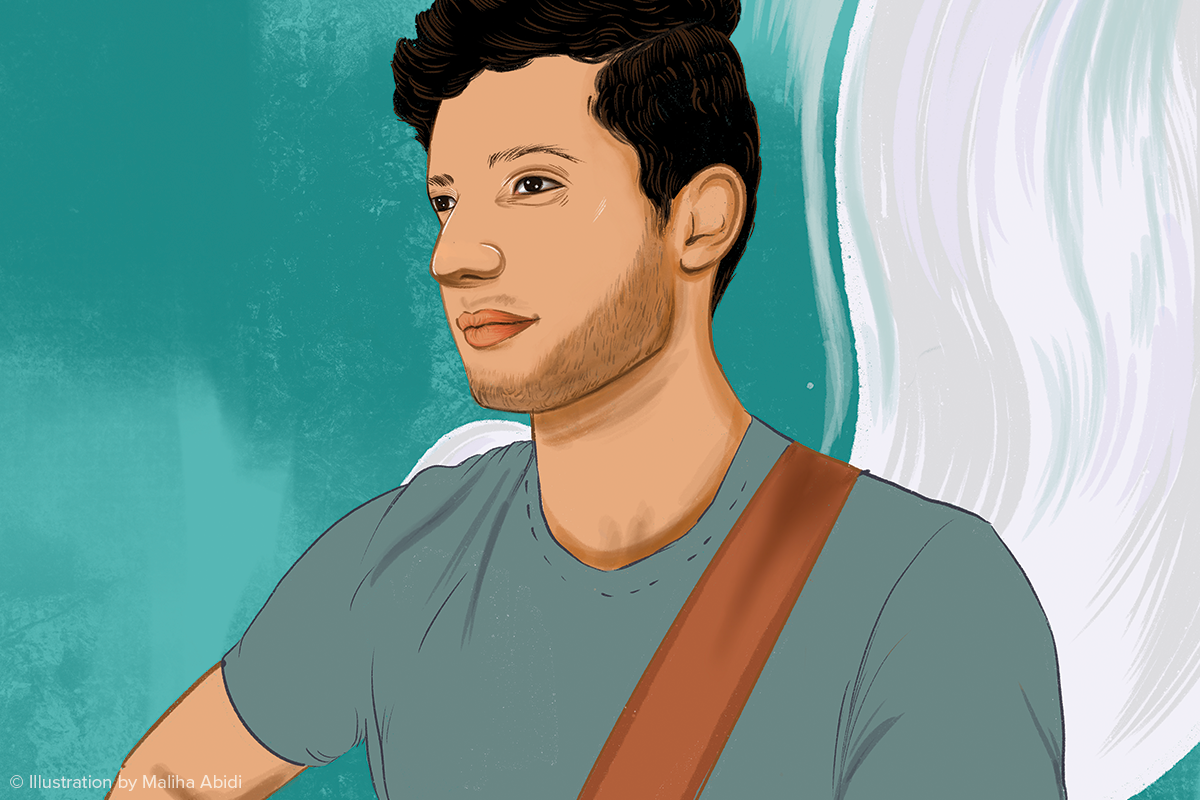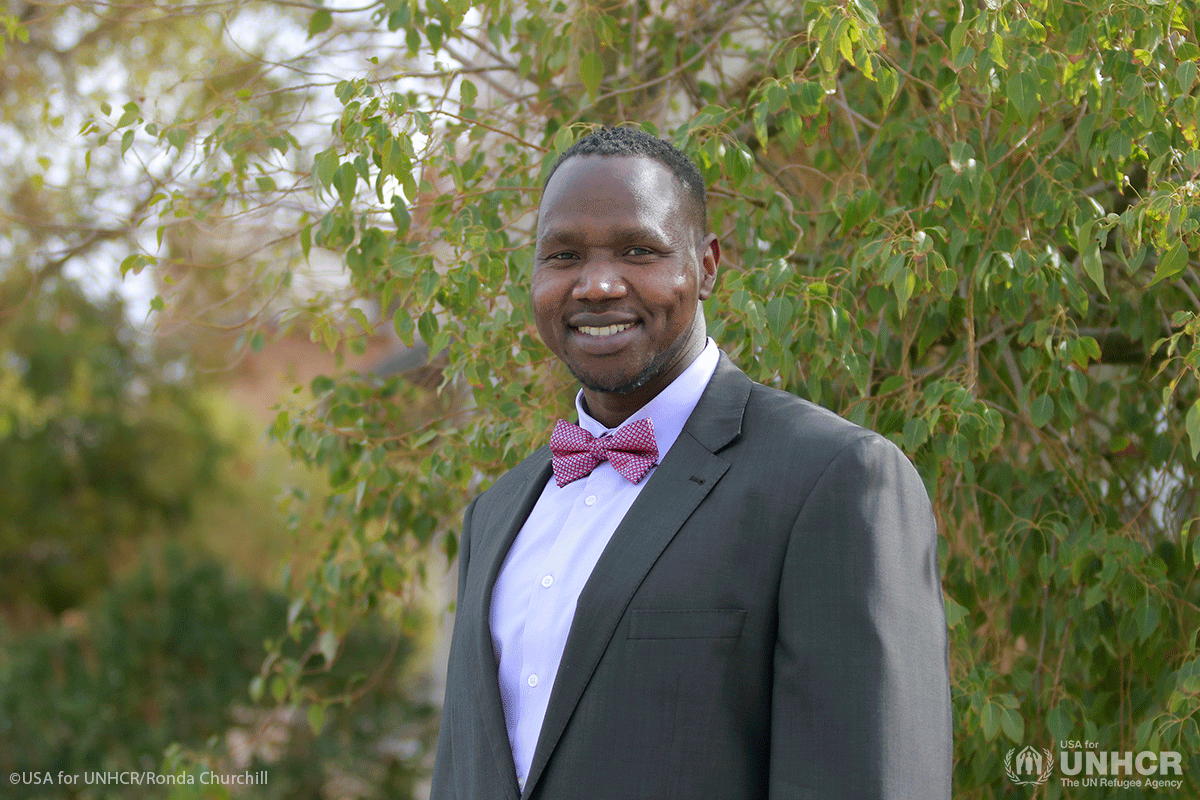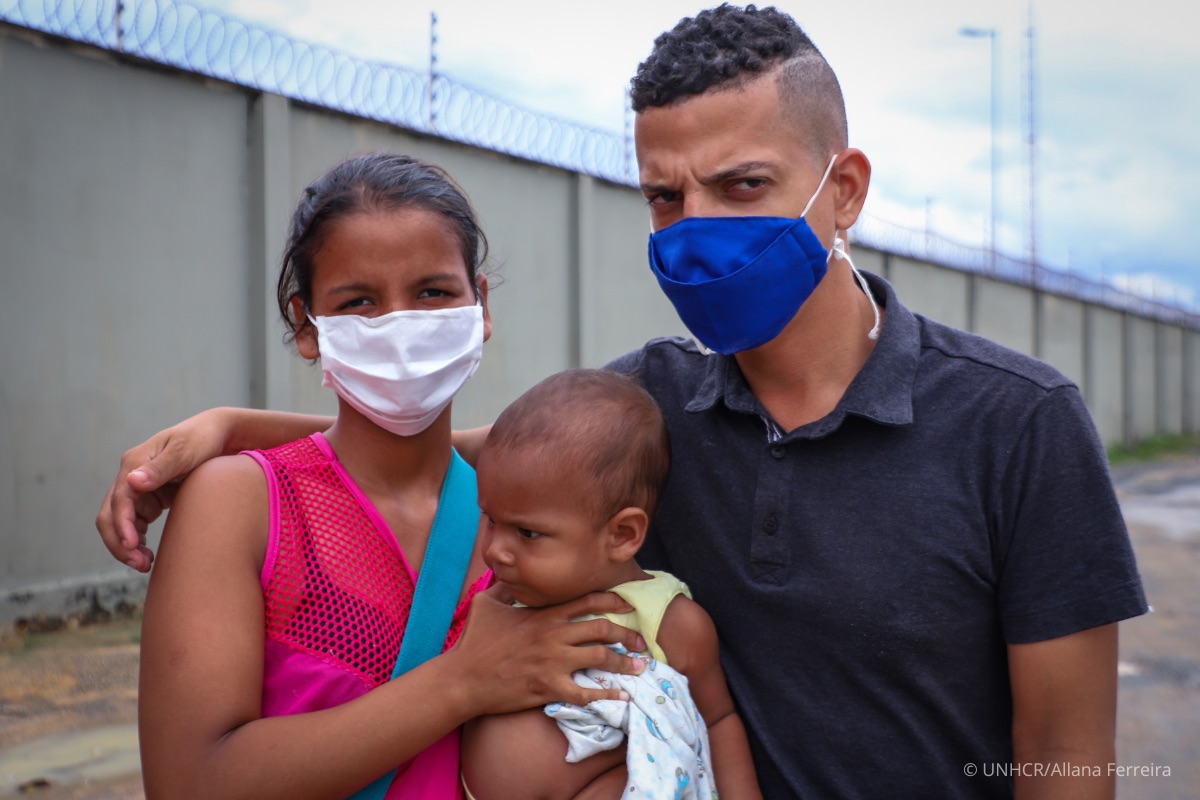Building a Brighter Future for Displaced People Globally

Letter from our Leadership
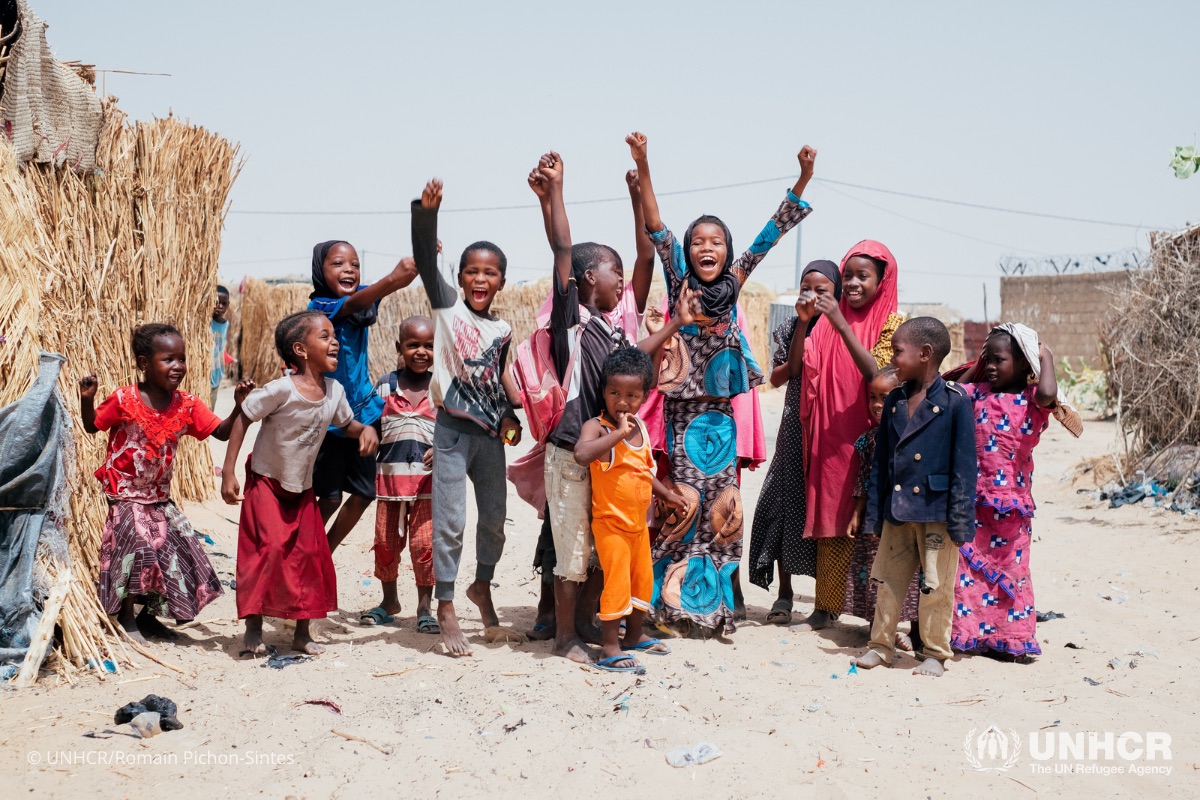
Dear Supporter
Refugees are ordinary people with extraordinary stories. Nobody knows this better than USA for UNHCR donors and supporters who stand alongside refugees in their darkest moments to help them rebuild — from the moment they are forced to flee to when they finally feel at home again.
Every step of the way, our compassionate donors provide refugee families with loving care that paves the road to a brighter future.
Emerging conflicts in 2021 pushed the number of refugees and forcibly displaced to a staggering 89.3 million globally—the highest ever recorded. In 2021, this dedicated community met the challenge of caring for refugees fleeing from conflict-affected countries such as Afghanistan, Ethiopia and Myanmar.
This report is dedicated to all of you who showed up and delivered for refugees during critical moments in 2021. In this report, you will see how your love and generosity were felt by families enduring the humanitarian crisis in Afghanistan and how it continues to fuel lifesaving initiatives that provide refugees with nutritious food, warm clothes and opportunities to restart their lives again. We hope your heart will be touched by our award-winning animated story featuring Abdallah, a resettled refugee from Iraq who is now helping others by pursuing a career in medicine.
Your unwavering support of former refugees like Abdallah empowers them to tell their incredible stories and start a new chapter in their lives.
While 2021 was a tumultuous year marked by devastating conflicts that displaced millions of families from their homes, your compassion was the difference between moments filled with fear and sighs of relief. Your love transformed tears of mourning for the loss of a beloved home into smiles of pride for a life rebuilt.
Thank you for walking alongside refugees in every step of their journey and helping them to hope, dream and thrive.


Mark Wallace
Chair, Board of Directors
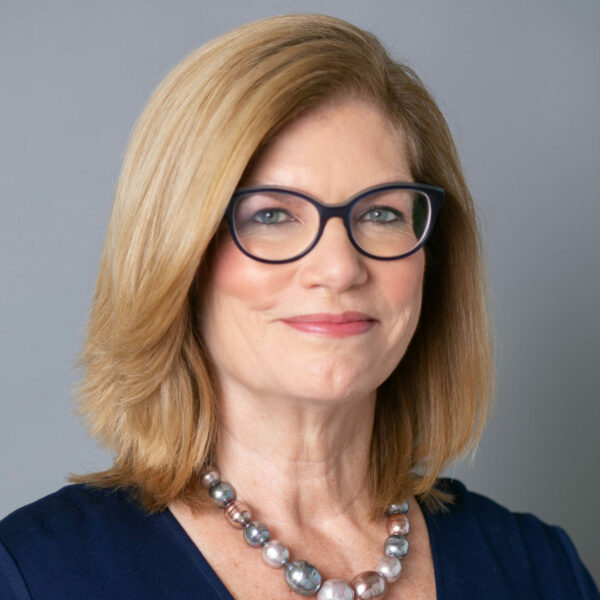

Anne-Marie Grey
Executive Director and CEO
2021 at a Glance
In a year wrought with escalating crises and new conflicts flaring up around the globe, donor support was crucial in helping to protect 89.3 million people who were forcibly displaced by the end of 2021 as a result of persecution, conflict and human rights violations. Among those displaced were 27.1 million refugees who were forced to flee conflict-affected countries such as Afghanistan, Ethiopia and Myanmar. Every year, our donors make the lifesaving decision to meet these difficult challenges by supporting families at their greatest moment of need. Their compassion fosters the safety, security and hope for the future that every refugee deserves.
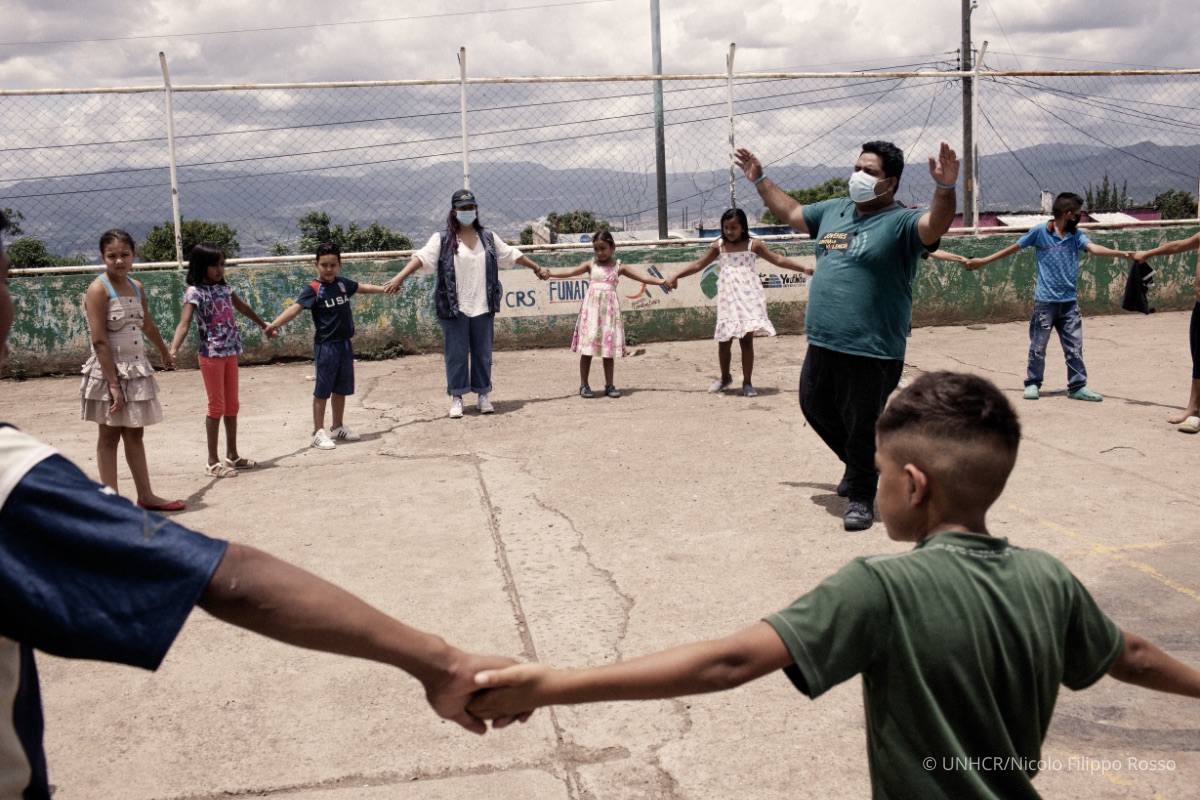
Central America
The North of Central America, a region including El Salvador, Guatemala and Honduras, is one of the most dangerous places on earth. Everyday, the threat of gang violence, extortion, persecution and sexual violence force countless people to cross borders in search of safety and a better life elsewhere.
More than one million people in El Salvador, Guatemala and Honduras have been forcibly displaced from their homes.
Individual applications for asylum were processed in Mexico. The country has gone from being a country of transit to a country of destination, receiving the third-largest number of asylum applications.
New asylum applications were registered by Nicaraguans fleeing the socio-political crisis and increasing political persecution in their country.
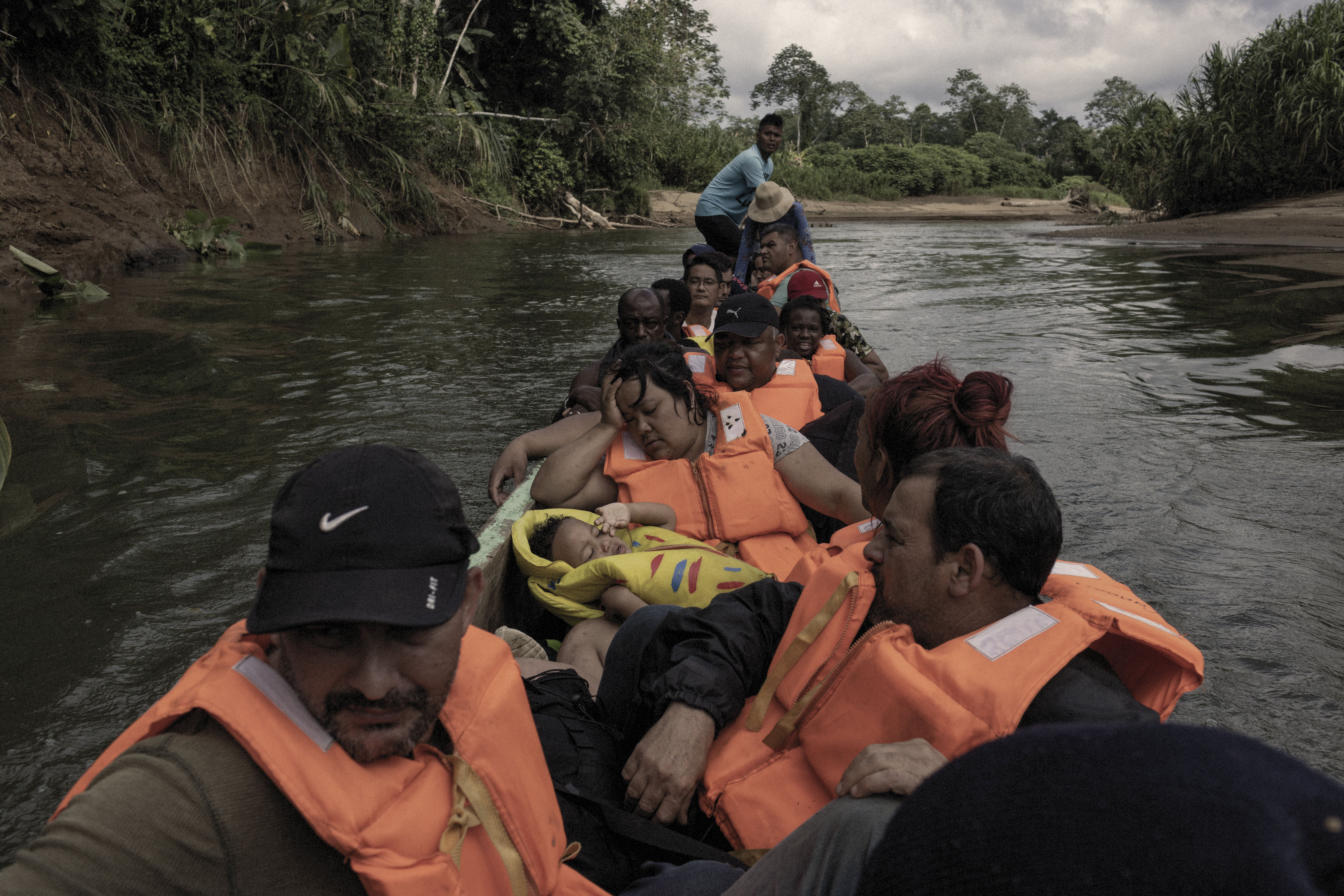
Venezuela
In the past eight years, more than 6.1 million Venezuelan refugees, migrants and asylum seekers have been forced to flee their homes to escape violence, insecurity and lack of food, medicine and essential services. By the end of 2021, the number of Venezuelans displaced abroad grew by more than half a million as COVID-19 related travel restrictions eased in the region. A vast majority of those displaced across borders reside in Latin America and the Caribbean.
Venezuelan refugees, migrants and asylum seekers have been displaced in the past eight years.
Venezuelans are displaced abroad, the second-largest population displaced across borders. Approximately 86 percent of all displaced people living in the Americas are Venezuelans.
New asylum applications from Venezuelans worldwide, representing a 41 percent drop in new asylum claims.
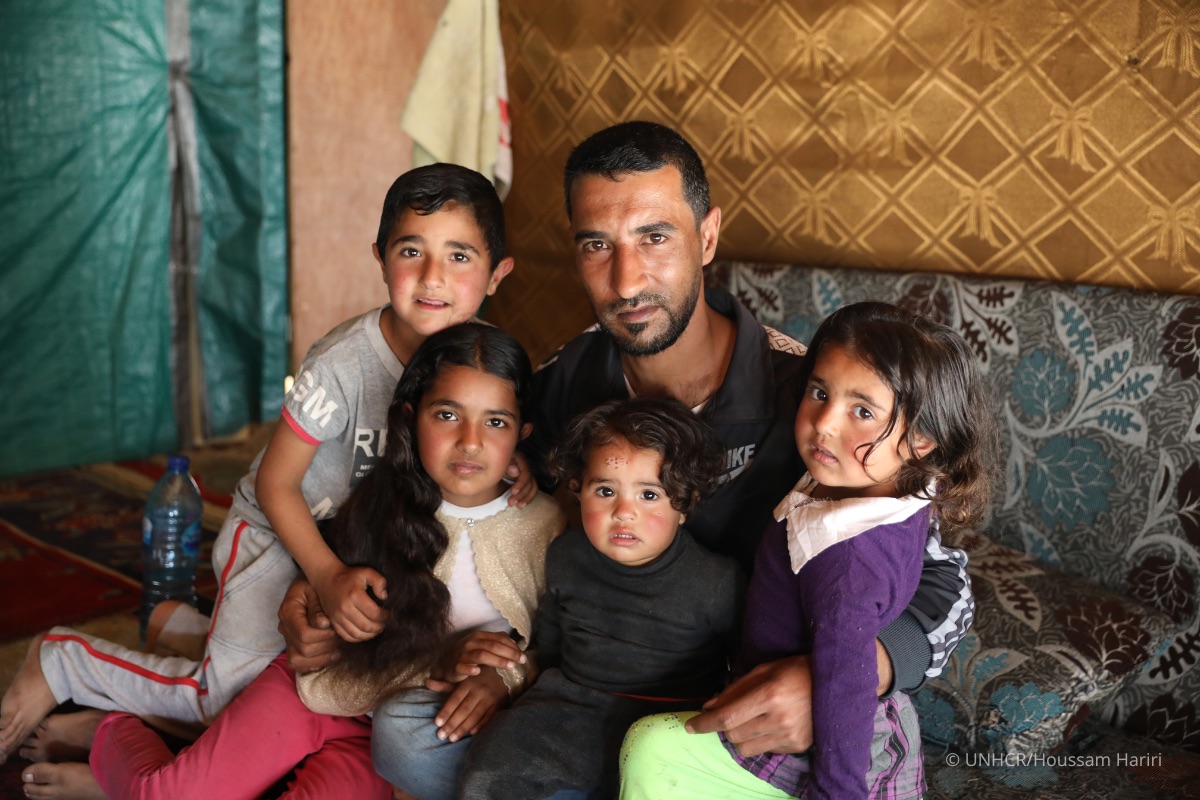
Syria
After over a decade of violent conflict, the Syrian refugee crisis is more protracted than ever with Syrians making up the largest refugee population globally. The continued instability in Syria has driven several hundred thousand people from their homes with 6.8 million refugees hosted in 129 countries by the end of 2021.
Syrians internally displaced at the end of 2021, meaning more than one-third Syrians remaining within the country are displaced.
Syrian refugees displaced across borders, constituting 27 percent of the global refugee population.
Refugees live in Turkey and more than 3/4 of Syrian refugees are hosted in neighboring countries.
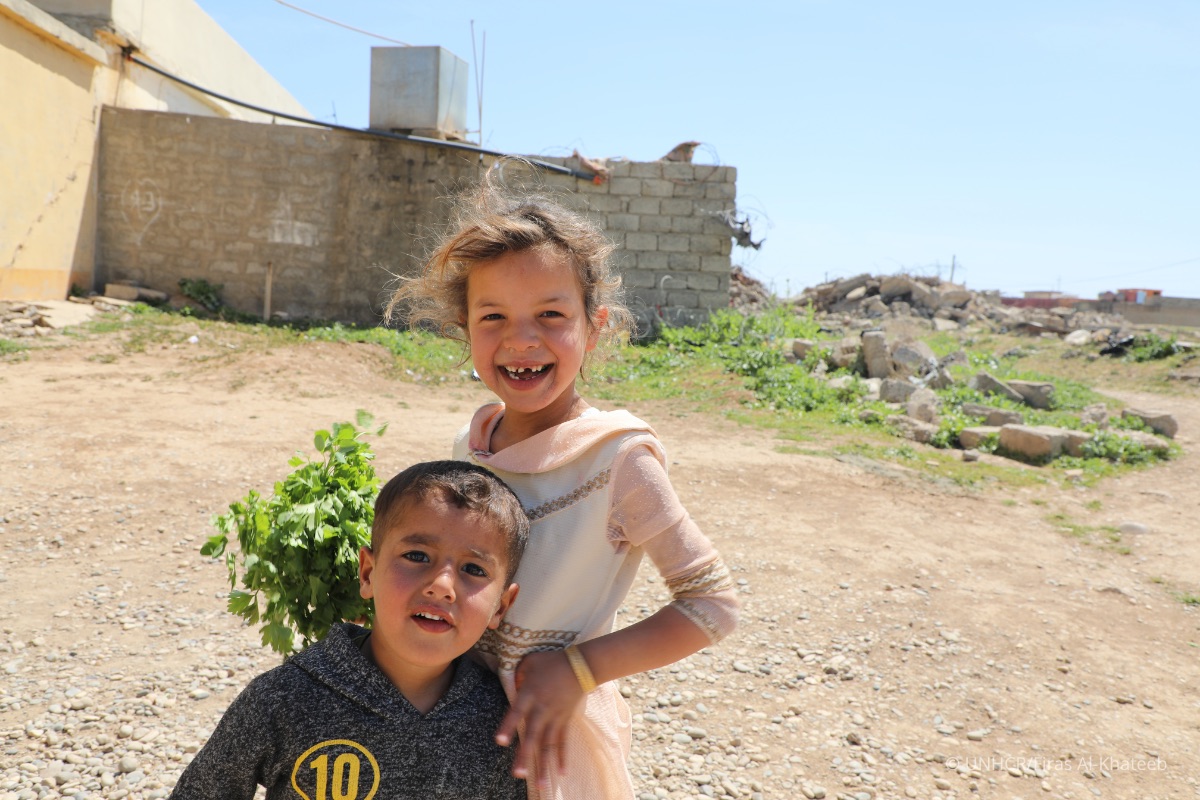
Iraq
The situation in Iraq remains dire. More than 6 million people need humanitarian assistance, including 1.2 million Iraqis who have been forced to flee their homes and remain displaced inside the country.
Formerly displaced Iraqis have returned home, but many continue to live in substandard conditions.
Refugees are hosted in Iraq, with 87 percent of all refugees originating from Syria.
of displaced Iraqis have been displaced for more than three years and 70 percent for more than five years.
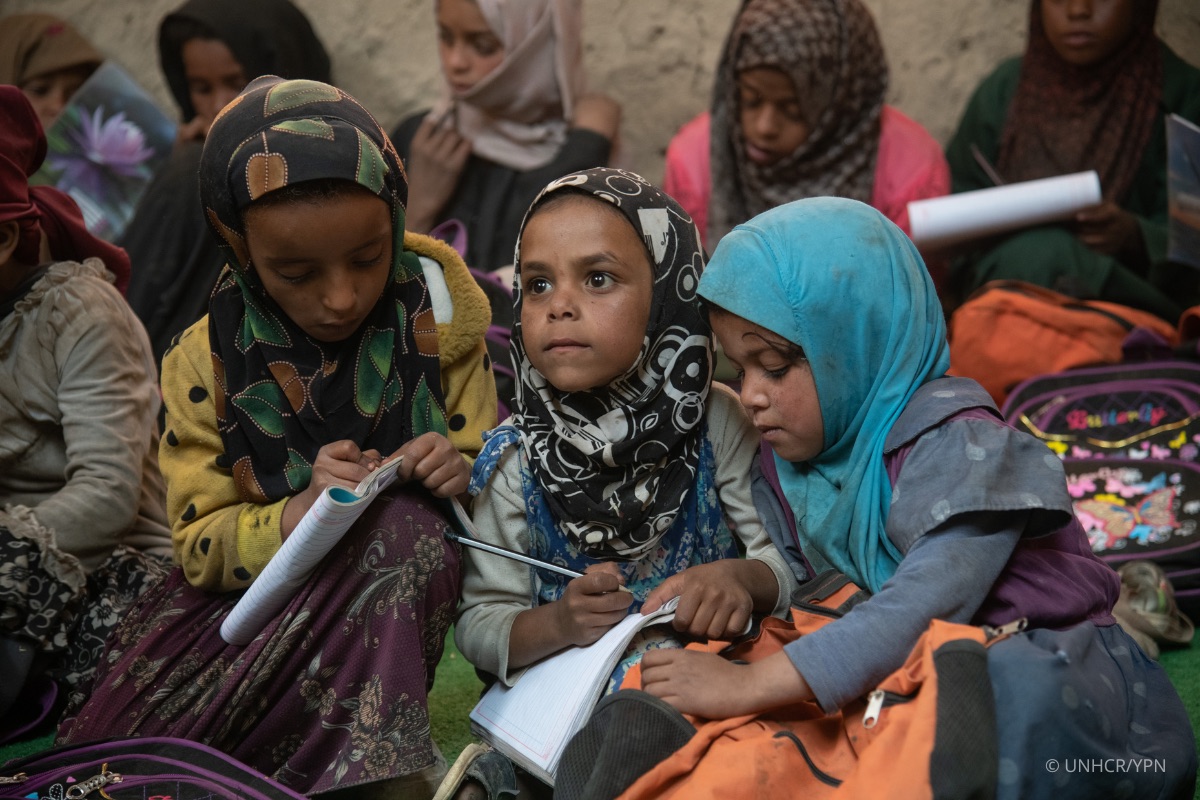
Yemen
After years of devastating conflict, Yemen remains one of the world’s worst humanitarian crises. More than 20 million people are in dire need of humanitarian assistance and the country is on the brink of famine, with tens of thousands already living in famine-like conditions and a staggering 5 million more just one step away from it.
People in Yemen are internally displaced, the fourth-largest IDP population in the world.
People were newly displaced in 2021 due to what was described as “among the worst” escalation of the conflict seen in recent years.
Of the total IDP population is made up of women and children. An estimated 6.1 million women and girls are in need of gender-based violence services.

Central African Republic
The Central African Republic has struggled with armed conflict and instability for many years. The most recent surge of violence in December 2020 elevated the number of displaced Central Africans to nearly 1.4 million – almost a third of the country’s total population.
People in the Central African Republic face severe levels of acute food insecurity.
People from the Central African Republic were displaced across borders by the end of 2021, a 15 percent increase from the previous year.
Of the IDP population is women and girls.
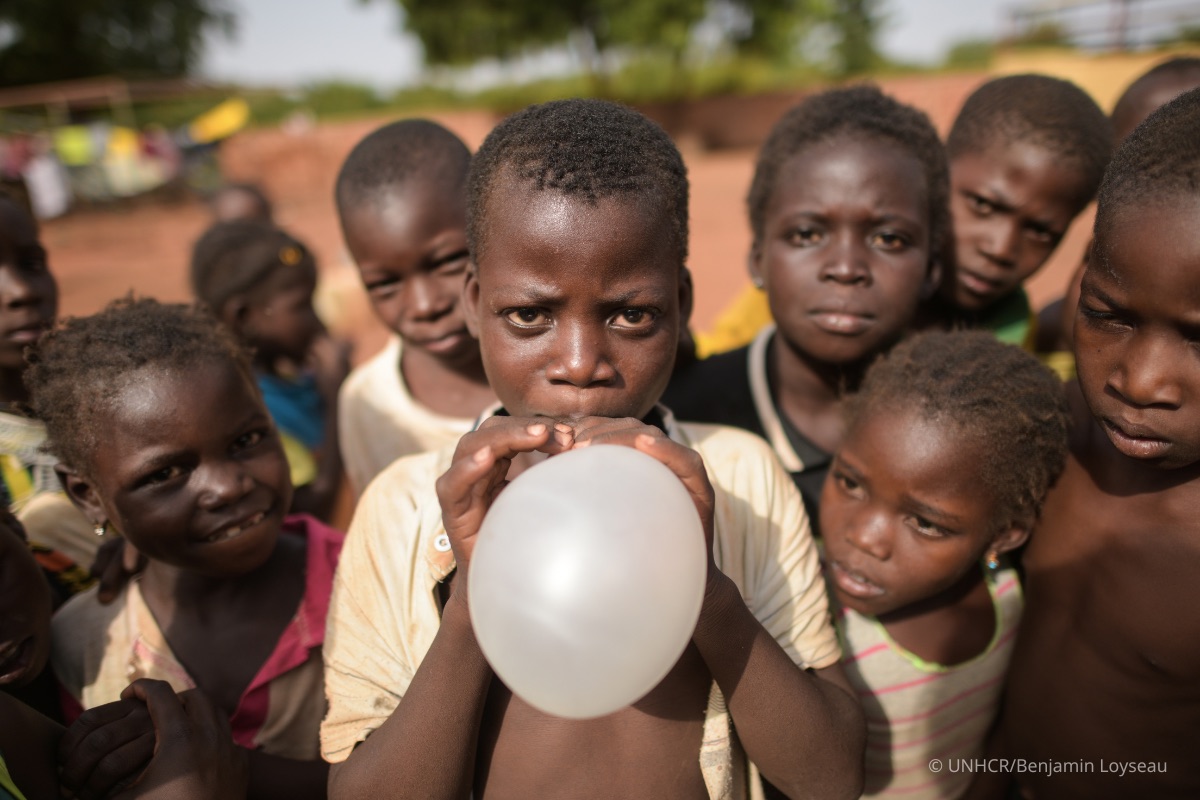
Sahel
The Sahel region of Africa is facing one of the fastest growing displacement crises in the world. The region comprises Burkina Faso, Mali and Niger—countries where violent insurgencies have driven internal displacement in the hundreds of thousands in the past year. More than 2.5 million people have fled violence in the region in the last decade.
People were internally displaced in the Sahel region of Africa by late 2021, a tenfold increase from 217,000 in 2013.
Refugees live in Central Sahel, a majority fled violence in Mali as a result of a major civil conflict which erupted in 2012.
Temperatures in the Sahel region are rising 1.5 times faster than the global average, making the humanitarian situation even worse.
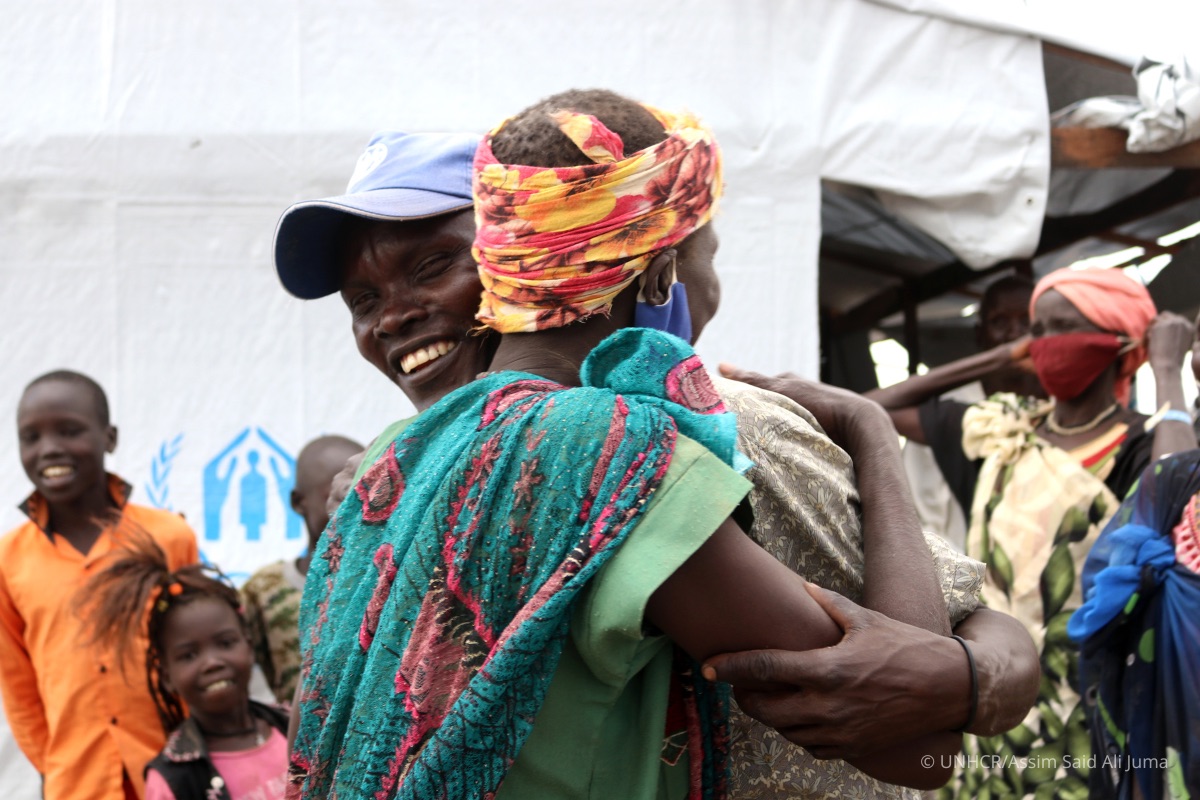
South Sudan
South Sudan remains one of the largest refugee situations in Africa. An insurgency in the Equatoria region and lethal intercommunal violence caused more than half a million people to flee in 2021. An estimated 528,900 fled their homes, increasing the number of conflict-related IDPs to over 2 million.
People from South Sudan were displaced across borders by the end of 2021, making up the fourth largest group of refugees.
Refugees returned home to South Sudan in 2021 despite the humanitarian situation in the country.
of the refugee population is made up of children, making the humanitarian crisis a “children’s crisis."

Bangladesh
Since violence broke out in August 2017, more than 1.2 million Rohingya people have been displaced from Myanmar and forced to seek refuge elsewhere. The Rohingya are the world’s largest stateless population.
Rohingya have been displaced from Myanmar since 2017, and they remain one of the largest displaced groups globally.
Additional Rohingya were registered as refugees in 2021, primarily due to the registration of new births.
Of all displaced Rohingya are hosted in Bangladesh.

Afghanistan
After more than four decades of conflict, the Afghanistan refugee crisis remains one of the largest and most protracted humanitarian and displacement crises. The Taliban’s takeover of Kabul in August 2021 resulted in further displacements and subsequent returns later in the year.
Afghans are experiencing acute food insecurity, including 9 million at risk of famine.
People from Afghanistan have been displaced across borders with 85 percent of all refugees hosted in neighboring Pakistan and Iran.
Afghans returned home in 2021 even as internal displacement rose for the 15th consecutive year.
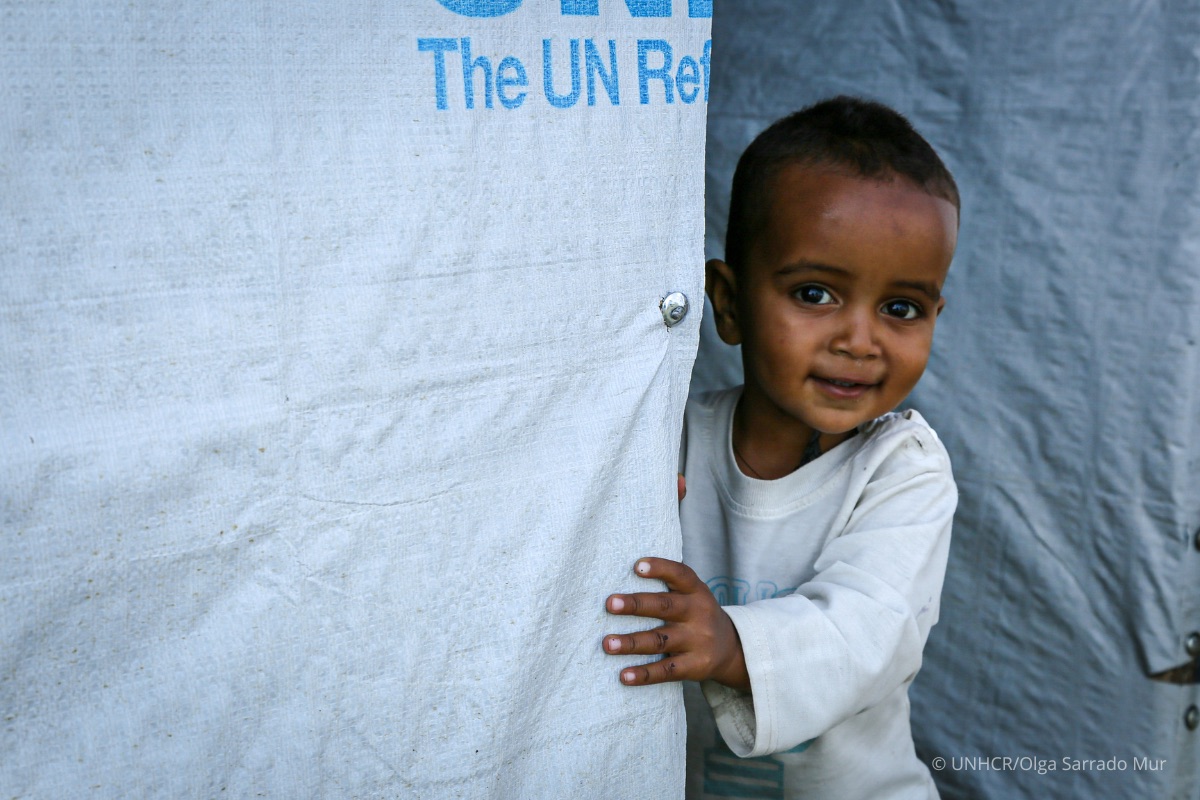
Ethiopia
The ongoing conflict in the Tigray region of Ethiopia is driving millions of people to flee their homes.
Ethiopians are internally displaced, including 2.5 million who were displaced in 2021.
People returned home during the year despite continued displacement in and out of the country.
Of people living in the Tigray region of Ethiopia are suffering from an extreme lack of food.
Our Values
The six values below represent the best of who we are and who we want to be.
Passionate.
The heads and the hearts of our team members are committed to our mission. It’s not just a commitment, it’s a calling.
Dynamic.
We are committed to continuous evolution – finding the best course of action and taking it.
Transparent.
We are open and honest, with each other and with our donors, partners and other stakeholders.
Cutting Edge.
We aspire to be pioneers and find new approaches to connect others with our mission.
Data Driven.
We analyze data, facts and trends to understand our circumstances, and act on what we learn.
Forward Thinking.
We are outcome-oriented and focused on what’s ahead.
USA FOR UNHCR: A Great Place to Work
In July 2021, USA for UNHCR was recognized as a Great Place to Work® for its strong workplace culture, approachable management and consistent positive experiences of employees. In a survey, 96 percent of USA for UNHCR employees said the organization is a great place to work – nearly 40 percent above the average U.S. company. USA for UNHCR employees feel a great sense of pride about the work they do on behalf of refugees.
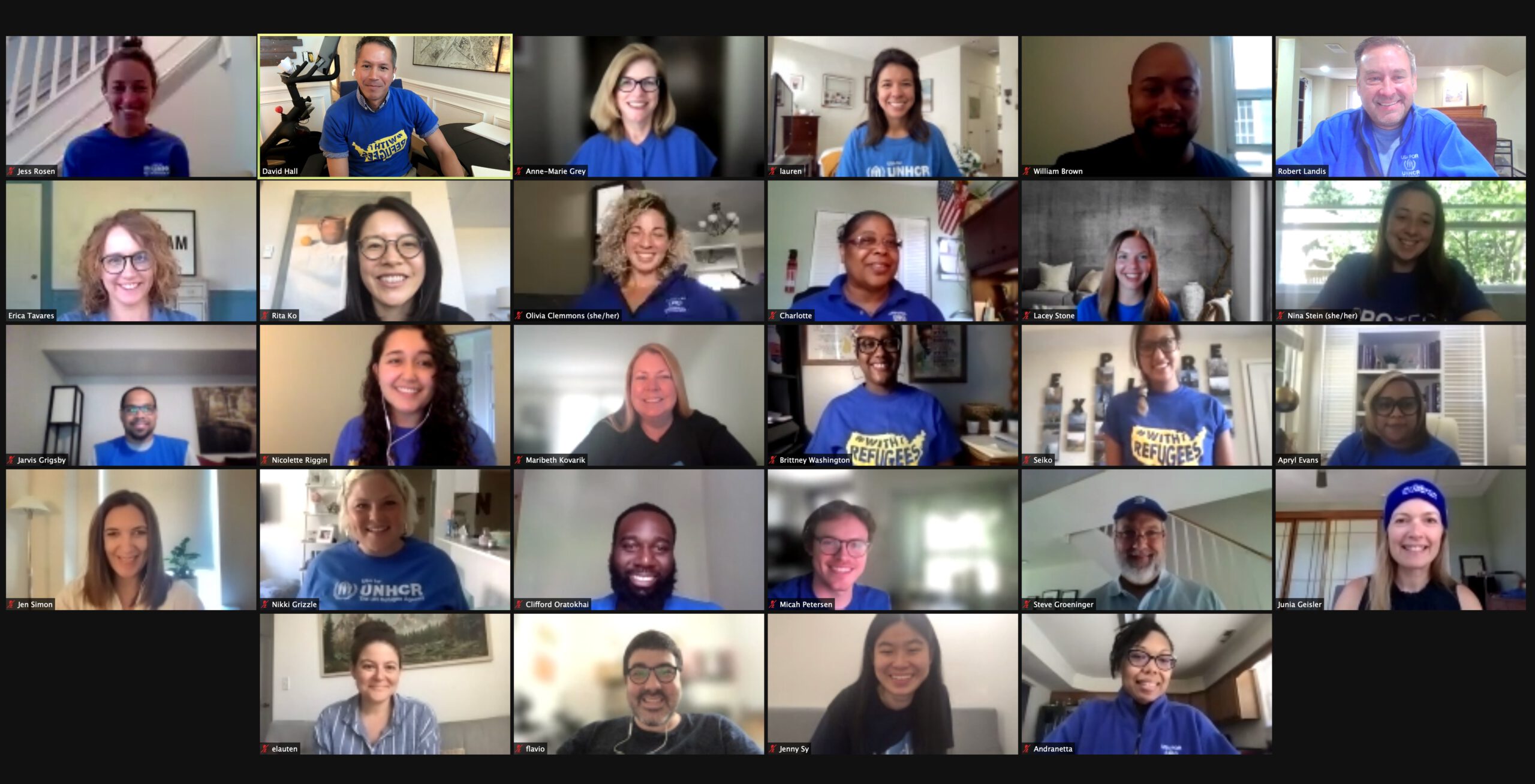
The Great Place to Work Recognition is the global authority on workplace culture, employee experience and leadership behaviors based on data compiled from more than 100 million employee engagement surveys around the globe.
Our Strategic Framework
Our multi-year strategic framework focuses on five goals that are charting the course of USA for UNHCR’s work in today’s complex global environment:
- Inspire interest, empathy and action for refugee rights and issues through compelling content and multi-audience engagement.
- Elevate results by investing in exceptional programs that catalyze change and make a difference in the lives of refugees.
- Enable organizational excellence, sustained growth and a best-in-class donor experience through data analytics, technology and funding.
- Bring together high-quality talent and expertise to facilitate novel approaches and lead new ways of thinking to tackle critical refugee issues.
- Cultivate the “connective tissue” between private sector opportunities in the refugee market and key partners.
 © UNHCR/Hanna Qassis
© UNHCR/Hanna Qassis
 © UNHCR/Sylvain Cherkaoui
© UNHCR/Sylvain Cherkaoui
Investing In Impact for Refugees
USA for UNHCR serves vulnerable people around the world who have been forced to flee their homes because of violence, conflict and persecution. Through the generosity of the American people, we help refugees survive, provide hope for recovery and prepare them for independence in a new and permanent home.
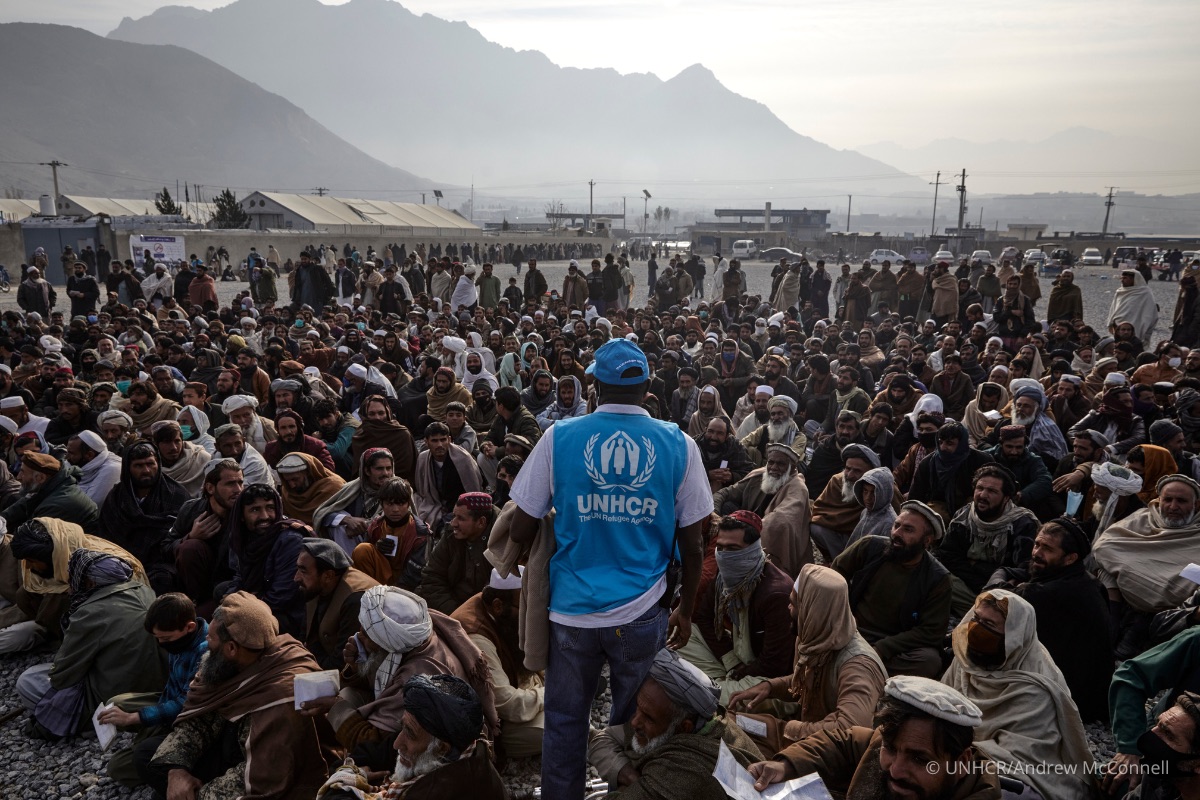
Help
When people are forced to flee they often leave everything behind – their homes, their belongings and sometimes even their loved ones. They embark on dangerous journeys with no guarantee of safety at the end just to find a safe place to live.
When a new emergency arises, USA for UNCHR is on the ground saving lives and making sure people’s first needs are met. We do this by providing food, clean water, shelter, medical care and, most importantly, protection of their rights and dignity.

Afghanistan
Jamil ur Rehman, a disabled second-generation Afghan refugee, visits 16-year-old Gul Bibi, who was able to continue her education after he helped her secure a wheelchair. Growing up, Jamil faced several obstacles because of his status as a disabled refugee. Now, he’s dedicating his life to removing the multiple barriers that prevent refugees with disabilities from getting to school in Pakistan.
“I don’t want any disabled person to feel that they cannot be happy or self-reliant,” Jamil says of his work. “They can do anything they want.”
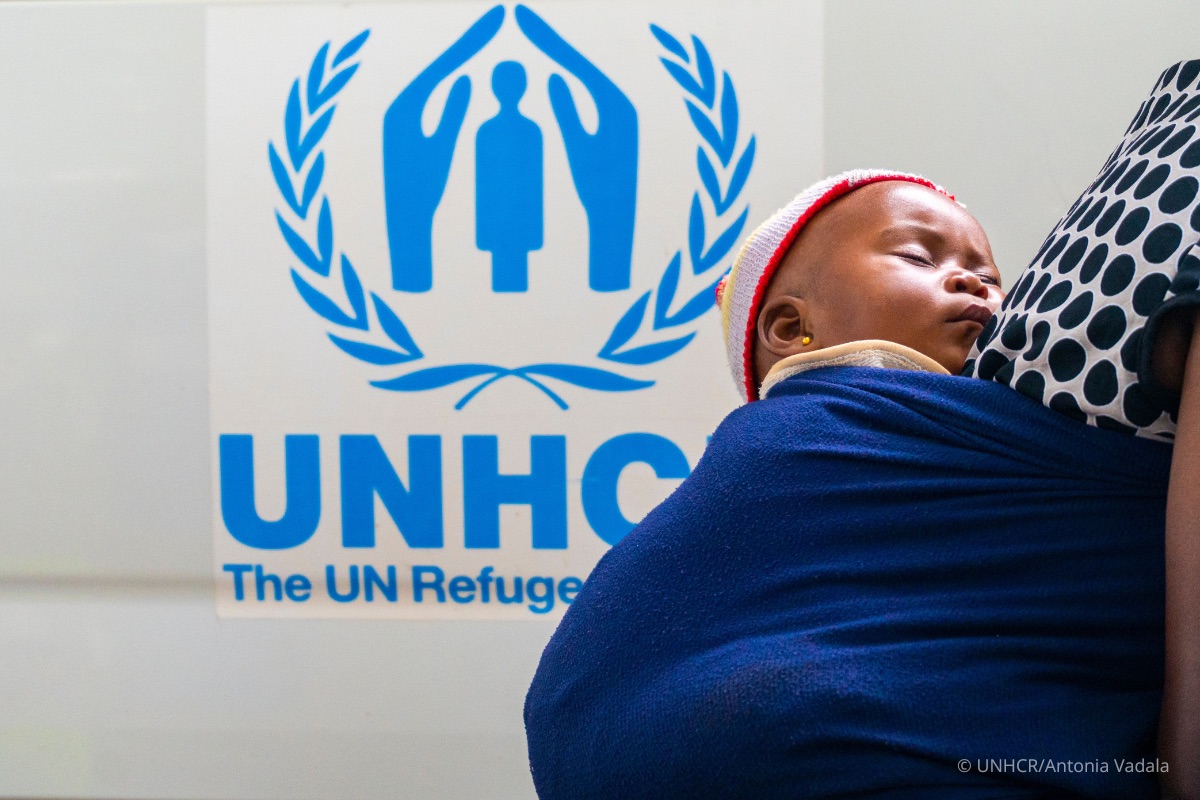
Hope
A refugee’s journey does not end when they reach a place of safety. Once people get the emergency care and shelter they need, they often need to wait in limbo for a long time — sometimes 20 years — while they find a new home. Life doesn’t stop in that interim: children need education, families need income and dreams need to be restored. USA for UNHCR is always searching for ways to power hope and restore some semblance of normalcy.

Ethiopia
Forwdsa Mohamad Dool, a 35-year-old Somalian mother of five holds her child at a nutrition program at Melkadida refugee camp. The program was established by UNHCR and “la Caixa” Foundation to help reduce child mortality by improving the nutrition of children, and supporting pregnant and breastfeeding mothers in refugee camps through counseling.
“It was the first time I heard ‘family planning’. The program helped in reducing malnutrition in our children as well as providing refugee mothers with counseling,” said Forwdsa.
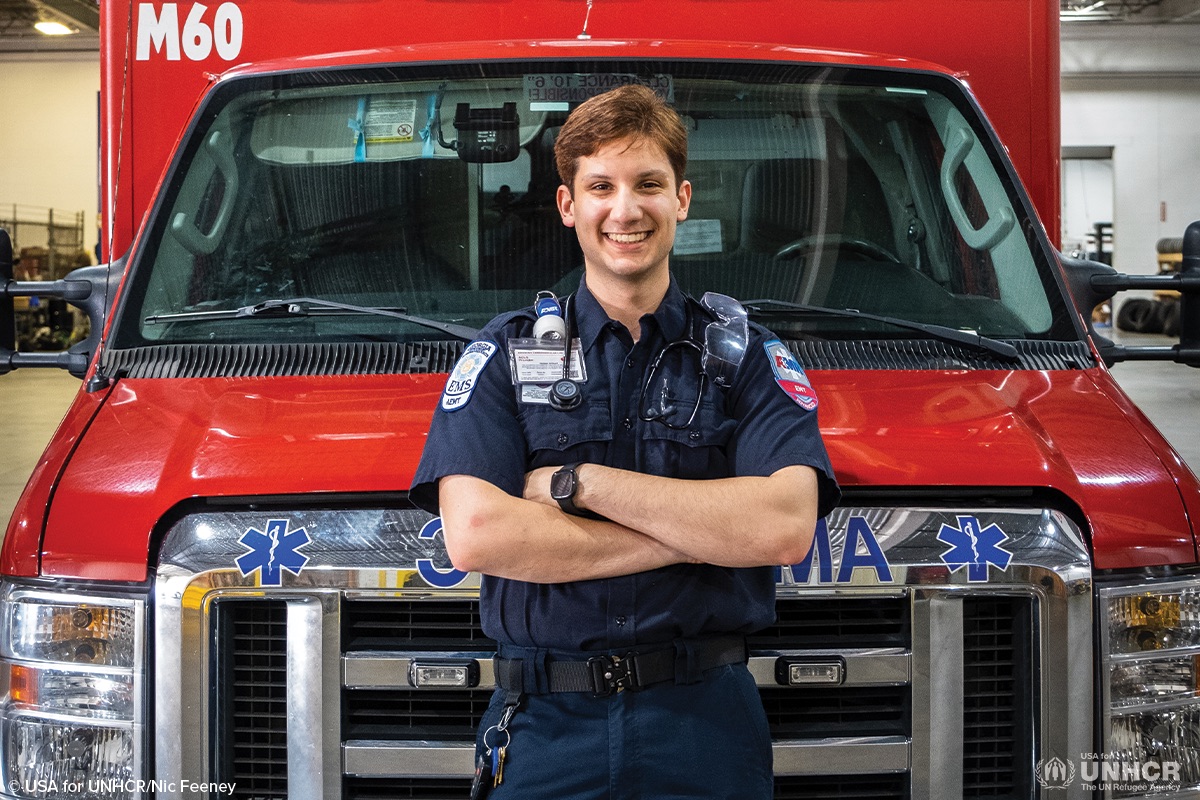
Home
Every person forced to flee wants to find a safe place to call home, where they can build a future for themselves and their families. Once refugees are resettled into a new country or return to their homes, they need adequate support to learn how to navigate the complexities of a new place. USA for UNHCR works closely with other organizations and community-based programs to help refugees feel welcomed in the United States and to promote acceptance and understanding of their plight.

U.S./Mexico border
Carolina, a young mother of two, fled from Guatemala after gangs overran her neighborhood. Desperate to protect her children, she used what little money she had to hire someone to help her get to the U.S. When her family crossed the border into Texas, they were detained and sent back to Mexico under Title 42. Policies like Title 42 deny people the right to request asylum.
“I can’t go back to Guatemala. It is unsafe. I want to go to the U.S. to reunify with my family,” Carolina says. “I want to give my kids a better life.”
2021 Financial Report
(as of December 31, 2021)The following is a summary of financial information of the U.S. Association for UNHCR for the year 2021. USA for UNHCR is classified as a tax-exempt organization under section 501(c)(3) of the Internal Revenue Service Code and is qualified for charitable contribution deductions.
All donations to USA for UNHCR are tax deductible to the fullest extent allowed by law. USA for UNHCR Federal Tax Identification Number is 52-1662800.
| Revenue | 2021 | 2020 |
|---|---|---|
| Grants and Contributions | $52,887,382 | $44,991,525 |
Corporation and Foundation Grants |
$7,224,073 | $6,189,450 |
| Interest and Investment Income | $7,386 | $45,774 |
| In-Kind Contributions | $70,339,929 | $41,057,050 |
| Contributions from UNHCR | $10,040,957 | $10,776,897 |
| Total Revenue | $133,275,654 | $96,871,246 |
| Expenses | ||
|---|---|---|
| Program Services | $115,063,341 | $72,869,668 |
| Supporting Services | ||
Management and General |
$3,477,316 | $2,938,243 |
Fundraising |
$20,786,733 | $18,932,063 |
Total Supporting Services |
$24,264,049 | $21,870,306 |
| Total Expenses | $139,327,390 | $94,739,974 |
| Other - Debt Forgiveness | $1,082,100 |
| Changes in Net Assets | -$4,969,363 | $2,131,272 |
|---|---|---|
| Net Assets at Beginning of Year | $16,903,463 | $14,772,191 |
| Net Assets at End of Year | $11,933,827 | $16,903,463 |
The complete financial statements for 2021 are available on the USA for UNHCR website. The firm of Gelman, Rosenberg & Freedman is USA for UNHCR’s auditor.
Our Board
USA for UNHCR is governed by an engaging and cohesive Board of Directors who share a commitment to the goals and objectives of the United Nations High Commissioner for Refugees (UNHCR). With an extensive knowledge base and various expertise our Board provides advice on policy, advocacy, fundraising and programming.
-
Mark Wallace, Chair
-
Kelly Blevins, Vice Chair
-
William Ball, Secretary
-
Yasmin Causer, Treasurer
-
Biar K. Atem, Board Member
-
Latrise Brissett, Board Member
-
Aishah Hasnie, Board Member *
-
Rachel Jarosh, Board Member *
-
Mark Lopes, Board Member *
-
Laura Lane, Board Member
-
Matthew Marolda, Board Member
-
Susan McPherson, Board Member ^
-
Jane Meseck, Board Member
-
Eric Sprunk, Board Member *
-
Virginia Tenpenny, Board Member
-
Beth Turner, Board Member
-
Dr. Liberty Vittert, Board Member
-
Charity Wallace, Board Member *
^ term finished December 31, 2021
* term began January 1, 2022


